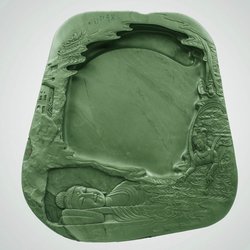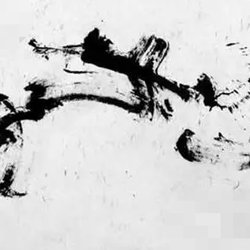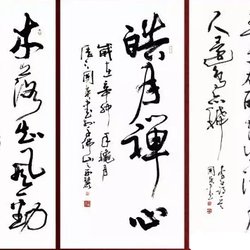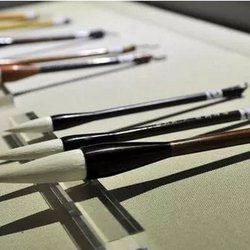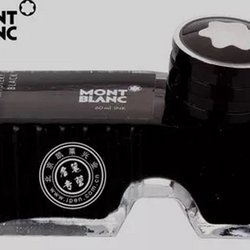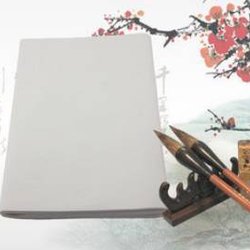First, let’s take a look at the types of paper:
1. Rice paper.
It got its name because it was produced in Xuanzhou. Manufacturing began before the Tang Dynasty, and sandalwood bark was used as raw material. After the Song and Yuan Dynasties, more than ten kinds of raw materials were used, such as mulberry, bamboo, and hemp. The texture of rice paper is soft and tough, the texture is beautiful, white and fine, and it is not damaged when folded. It is conducive to writing and painting. The ink rhyme is clear and has unique penetration, moistening and one-time adsorption properties. The ink is colored, and it can show a unique style that is obviously the same as reality and reality in calligraphy and painting. , The writing is both physical and spiritual, and the painting ink is vivid. In addition, it is also resistant to aging, insect infestation, heat and light, and is suitable for long-term storage. It is known as the "Millennium Beautiful Paper" and the "King of Papers". Rice paper can be divided into raw Xuan, cooked Xuan and half-cooked Xuan according to its different processing. Raw rice paper, also called raw paper, is used directly after production. It has strong water absorption and ink moisturizing properties, and is suitable for splash-ink paintings and freehand paintings. The brush strokes have clear layers, dry, wet, thick, light, and changeable. Cooked rice paper, raw rice paper soaked in alum water is called cooked rice paper or alum rice paper. It is made by adding vitriol, calendering, dragging pulp, filling powder, darkening, sprinkling gold, adding wax, sizing and other processes. It is not easy for ink to smudge when doing calligraphy and painting. It is suitable for painting neat and meticulous gongbi paintings and writing regular script. . This paper will leak alum and become brittle after a long time. The hard yellow paper used for writing scriptures in the Tang Dynasty and the Chengxintang paper used in the Five Dynasties and Northern Song Dynasty were both cooked rice paper. Half-cooked xuan is half-cooked xuan. It is made from raw xuan soaked in various plant juices. It has weak water resistance and is used for writing or painting. The ink is smeared and spreads slowly. It is suitable for writing small screen strips, album pages or as a combination Drawings written by workers.
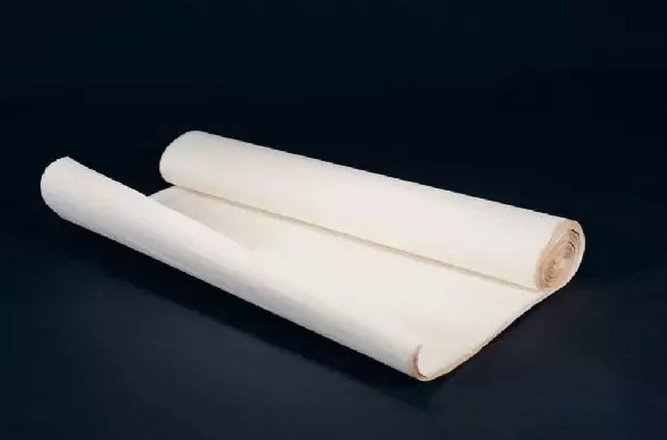
Rice paper is divided into three categories: cotton, pure leather, and special pure leather according to the different proportions of the leather used. According to the size, it is divided into two feet, three feet, four feet, five feet, six feet, seven feet, eight feet, and two feet. , six feet, four feet, six feet, eight feet and other specifications; according to the thickness, there are single Xuan, sandwich Xuan, two layers, three layers, four layers. The thinnest type of rice paper is specially made and is mainly used for rubbings, copying, printing ancient books, binding and printing books; product names include cotton strips, tie patterns, rib patterns, turtle pattern, cicada wings, etc.
2. Xue Tao's paper, a famous paper from the late Tang and Five Dynasties.
It is a kind of processed dyed paper. It was named because it was created by Xue Tao. Xue Tao, a native of Chang'an in the Tang Dynasty, lived in Sichuan with his father when he was young. After his father passed away, he fell into prostitution and became a prostitute. She was good at writing poems and lyrics, but she felt that the paper was too big at that time, so she personally guided the workers to make smaller paper. Because it is made from the water of Huanhua Creek next to Xue Tao's house, it is also called "Huanhua Jian". According to legend, Xue Tao once sprinkled plant petals on paper and processed it into colored paper. This kind of paper is colorful and exquisite, also known as "Songhua Paper". There were imitations in later dynasties.
3. Water pattern paper, a famous paper from the Tang Dynasty, also known as "flower curtain paper".
This kind of paper can show translucent lines or patterns in addition to curtain lines when viewed in the light, with the purpose of adding to the potential beauty of the paper. There are two production methods: one is to use threads to weave textures or patterns on the paper curtain, which comes out of the curtain surface. When making paper, the pulp here is thin, so the texture is translucent and appears on the paper; the other is to carve the texture or pattern into the paper curtain. A mold made of wood or other materials is pressed on the paper with hadrons, just like the watermark pattern on the commonly used certificate paper and currency paper. Yang Shen of the Ming Dynasty's "General Record of Dan and Lead" says: "In the Tang Dynasty, there was a paper called Yanbo Jian, and the cover paper pattern was like a water pattern."
4. Chengxintang paper.
The rice paper produced in the Huizhou area during the Southern Tang Dynasty was as thin as an egg membrane, as firm and clean as jade, thin and smooth, and some were fifty feet long, evenly thin from beginning to end. Li Yu, the late emperor of the Southern Tang Dynasty, especially liked this kind of paper. He often used Chengxin, the place where he read and reviewed memorials, to store it for long-term use in the palace. Therefore, it was called "Chengxintang paper" and was regarded as an art treasure by later generations.
5. Thank you for the official note.
This is a processed dyed paper created by Xie Jingchu (1019-1084) in the early Song Dynasty, hence its name. Inspired by Xue Tao's paper-making work, Xie designed and manufactured "Ten Kinds of Man-Jian" in Yizhou, that is, ten colors of special paper for letters. This kind of paper has bright, novel, elegant and interesting colors, including dark red, pink, apricot red, bright yellow, dark cyan, light cyan, dark green, light green, copper green and light cloud. It is as famous as Xue Tao's paper.
6. Goryeo paper, also known as Korean paper and Goryeo tribute paper.
Paper produced in the ancient Goryeo Kingdom (also known as Goguryeo, North Korea). Chen's "Fu Xuan Ye Lu" of the Northern Song Dynasty says: "Korean paper is made of cotton and cocoons. It is as white as damask and as tough as silk. It is used for writing and the ink is lovely. It is not found in China and is also a rare product." Most of this paper is Thick stripe pattern, the paper grain distance is large and thicker than white paper. According to recent research, most of the Korean paper used for writing in my country during the Song, Yuan, Ming and Qing Dynasties was mulberry paper. During the Qianlong period of the Qing Dynasty, there were imitation Korean paper in my country.
7. Golden millet paper.
Zhao Kuangyin, Emperor Taizu of the Song Dynasty, advocated Buddhism, and the practice of printing scriptures became popular throughout the country. In order to meet this need, Shezhou specialized in producing a kind of scripture paper with dark and light patterns - hard yellow paper, also known as waxy yellow scripture paper, or golden millet paper. Jinsu Temple is located at the foot of Jinsu Mountain in Haiyan, Zhejiang Province. Because a lot of paper is needed to copy scriptures in the temple, the paper is named "Jinsu Jian". Its characteristics are hard and dense texture, bright and translucent, moth-proof and water-proof, beautiful color, and long life. Even though it has been used for thousands of years, it looks like it was made new.
8. Bailu paper, the name of ancient paper.
"Zhi Zheng Ji": "It is said that Bailu paper is the paper written by Hushan. There are three grades: green, yellow and white. The white one has a bright and lovely luster, and is tougher than Jiangxi paper. Zhao Songxue used it for writing and painting, and it is wide. The elders called it Bai, but later it was named Baiguan, and it was renamed Bailu."
9. Jade paper, famous ancient paper.
A kind of white and firm fine paper. Song Dynasty Huang Tingjian's poem "Yuzhang Collection, Ci Yun Wang Bingzhi Hui Jade Paper": "The small note from the ancient field has benefited me a hundred, I believe that the man in the stream can unravel the jade." Yuan Fei wrote "Shu Jianpu": "Today, the skin of wood is used as the foundation. Paper, but Cai Lun's method is used in Sichuan. The paper has jade plates, tribute surplus, sutra scraps, and surface gloss." "Shaoxing Prefecture Chronicle": "The jade plate paper is as smooth as jade."
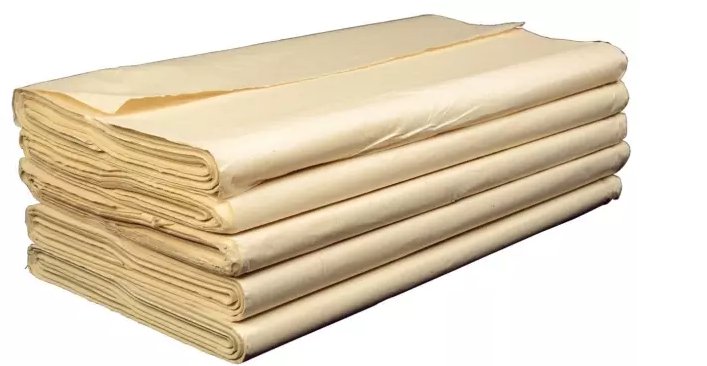
Paper choice
Pliable and thick texture:
Texture is the most important thing when choosing paper. Paper with poor texture is easy to damage pens and difficult to preserve. Famous papers from ancient and modern times are all famous for their quality, such as Chengxintang paper "as dense as a seal" and Jade Banxuan "flexible". ,durable". Tough and tight paper is the best, and you can tell by visual inspection when choosing.
White color:
If the paper is not white, the raw material is not good, or the water quality is poor, it is not considered good paper. Xuan's extremely white jade board is made of sandalwood as raw material, and Shu's "paper is made from Huanhuatan water" are all examples. If it is dyed, it must be pure and white, which is the paper with good nature. However, dyed paper is not easy to pass down for a long time. If you hope that the work will be placed in the Palace Museum a hundred years later, it is better to avoid using it.
Surface gloss and astringency are moderate:
The surface of paper can be divided into smooth and rough. If it is smooth, it is solid and easy to write, but if it is too smooth and the pen passes lightly, there will be no writing power. If it is rough, it is the opposite, and it is easy to gain writing power, but if it is too astringent, it will be difficult to write. It is difficult to apply the brush and the tip of the brush is easily damaged, which is called "thin but not astringent". This can be distinguished by sight and touch, so I won’t go into details here.
Moderate ink absorption:
The paper must be able to hold ink, otherwise the ink will float on the surface of the paper and fall off easily, making it impossible to store for a long time. Generally speaking, rice paper absorbs ink better, while paper does the opposite. The ink absorption is too strong. If you move the pen slowly, all the dots and strokes will become ink balls. However, if the ink absorbency is too weak, it will be difficult for the ink to enter the paper, which is not suitable. Therefore, when choosing paper, you should consider the style of writing and your personal writing speed. It is better if the ink can enter the paper but not form "clumps". When purchasing, if the store allows it, just try it with ink, and you will know after you try it.
Choose the paper according to the inscription:
When copying inscriptions on stele, if the shape is required to resemble the gods, not only the pen but also the paper must be considered as one of the conditions. When choosing paper, first identify its ink-absorbing properties, which will depend on how well the original work is inserted into the paper. If the paper is loaded with a lot of paper, choose a strong ink-absorbing paper, otherwise choose a weaker one. If it is impossible to know the actual situation of the ink, such as those printed on stone slabs, it can also be distinguished based on its customs. If the ink is sharp and radiant, paper is often used; if it is gentle and subtle, and the elegance is restrained, rice paper can be used.
Choose paper based on personality:
Of course, personal preferences should also be considered. Otherwise, if you buy paper that you don’t like to use, you may not want to use it anymore. In addition, those who are in a hurry to write should choose strong blotting paper so that the ink can enter the paper. Those who are slow to write should choose weak blotting paper, otherwise the ink will jump out on the paper, which is not a good idea.

